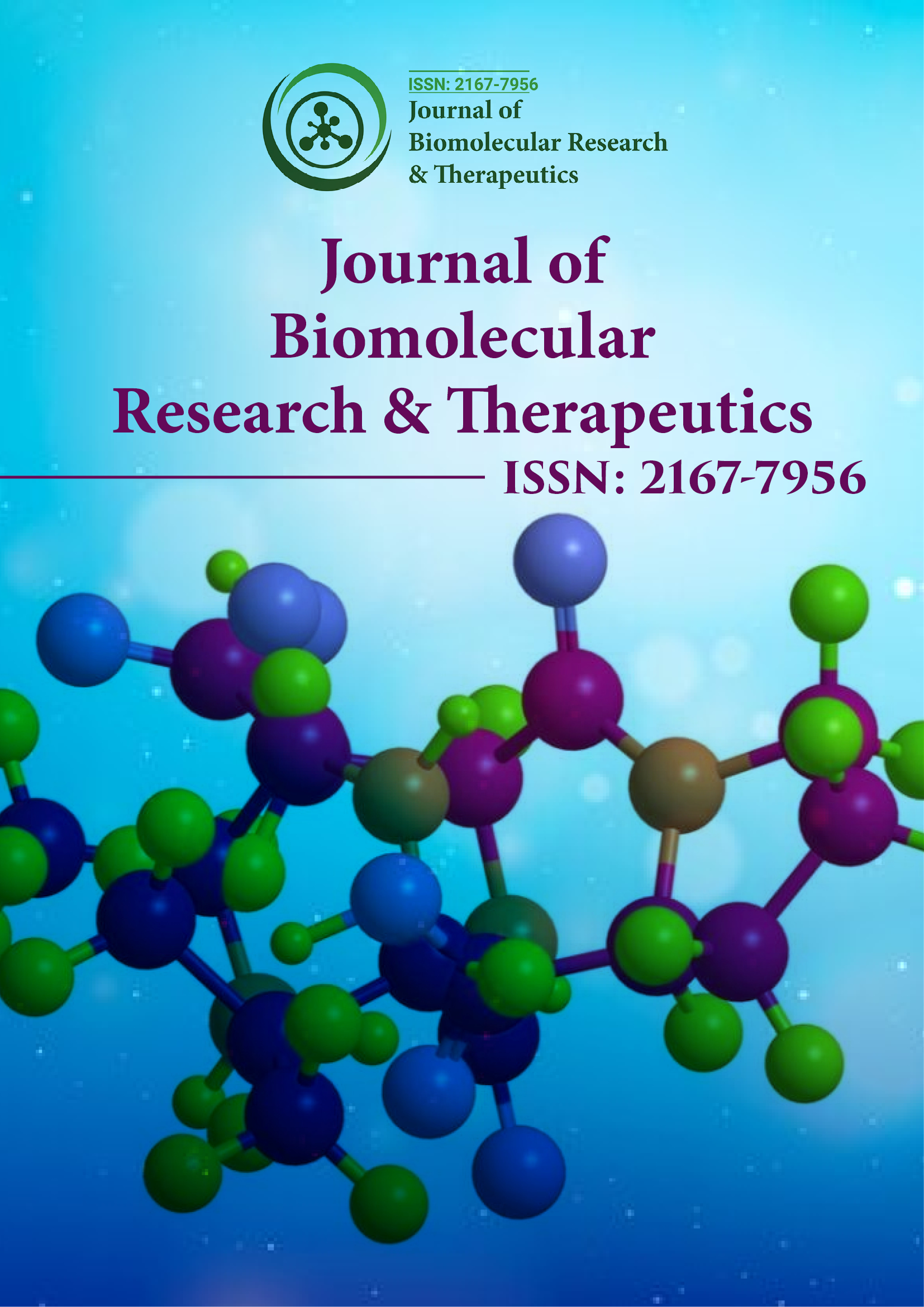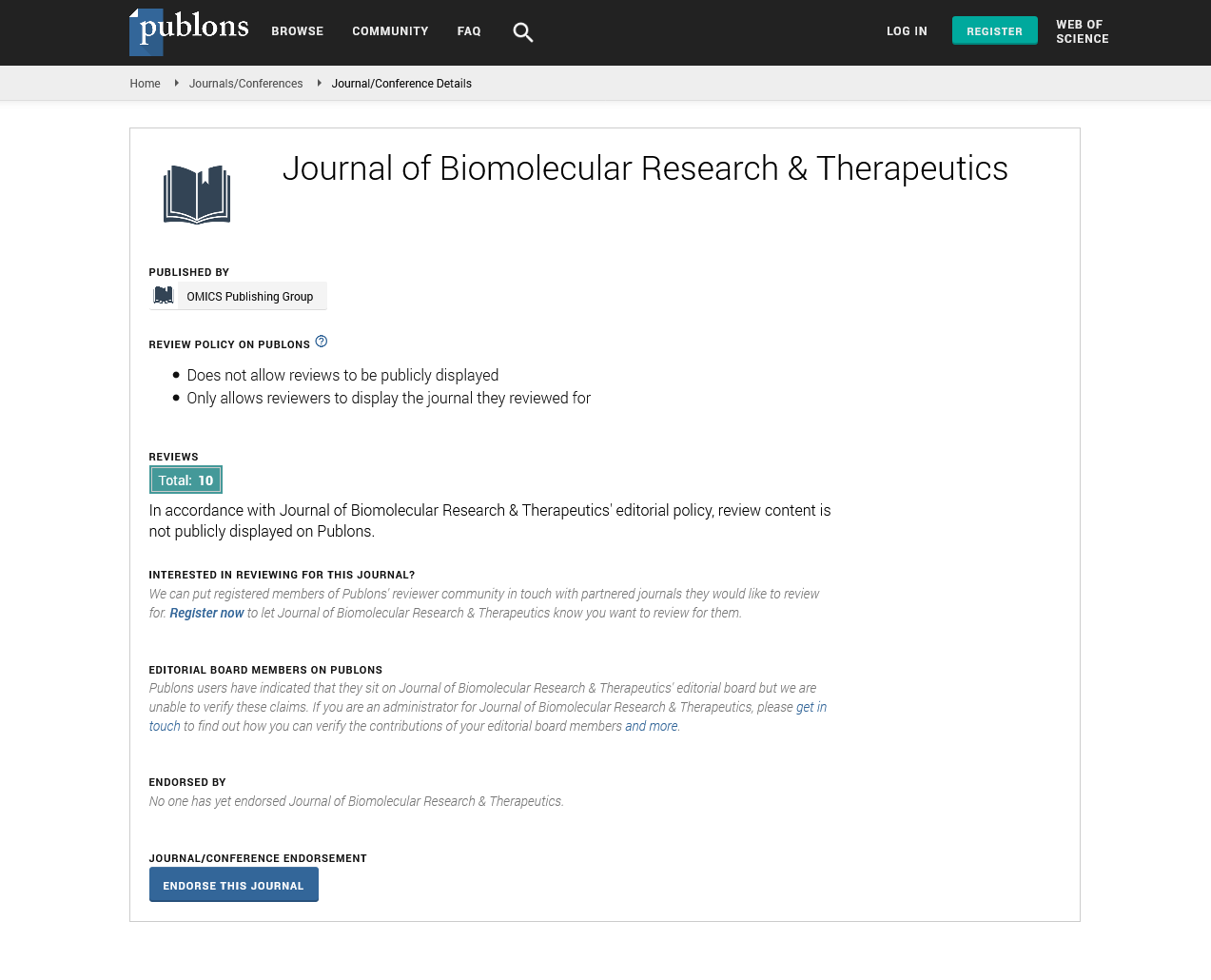Indexed In
- Open J Gate
- Genamics JournalSeek
- ResearchBible
- Electronic Journals Library
- RefSeek
- Hamdard University
- EBSCO A-Z
- OCLC- WorldCat
- SWB online catalog
- Virtual Library of Biology (vifabio)
- Publons
- Euro Pub
- Google Scholar
Useful Links
Share This Page
Journal Flyer

Open Access Journals
- Agri and Aquaculture
- Biochemistry
- Bioinformatics & Systems Biology
- Business & Management
- Chemistry
- Clinical Sciences
- Engineering
- Food & Nutrition
- General Science
- Genetics & Molecular Biology
- Immunology & Microbiology
- Medical Sciences
- Neuroscience & Psychology
- Nursing & Health Care
- Pharmaceutical Sciences
Commentary - (2024) Volume 13, Issue 5
Advancing Biomolecular Analysis: Possibilities and Potential of Large Language Models
Chi Feng*Received: 30-Sep-2024, Manuscript No. BOM-24-27786; Editor assigned: 02-Oct-2024, Pre QC No. BOM-24-27786 (PQ); Reviewed: 16-Oct-2024, QC No. BOM-24-27786; Revised: 23-Oct-2024, Manuscript No. BOM-24-27786 (R); Published: 30-Oct-2024, DOI: 10.35248/2167-7956.24.13.404
Description
Large Language Models (LLMs) have emerged as transformative tools in various domains, including biomolecular analysis. These models, powered by advanced neural architectures like the Transformer, have demonstrated unprecedented capabilities in processing and understanding complex data. Their potential spans from deciphering intricate biomolecular structures to enabling innovative applications in drug discovery, genomics and systems biology.
At the core of LLMs lies the Transformer architecture, a mechanism that facilitates efficient parallel processing of sequential data. Unlike traditional recurrent models, Transformers use self-attention mechanisms to capture relationships between data points, regardless of their positional distance. This capability is particularly relevant in biomolecular analysis, where sequences such as DNA, RNA and proteins exhibit intricate interdependencies. For example, in protein folding, the spatial arrangement of amino acids is influenced by long-range interactions that standard models struggle to capture. Transformers, with their attention-based approach, excel in modeling such dependencies, making them ideal for analyzing biomolecular sequences.
The training of LLMs involves exposure to vast datasets, enabling the models to learn representations that capture both local and global patterns. For biomolecular applications, these datasets often consist of nucleotide sequences, protein structures and functional annotations. Through unsupervised learning, LLMs develop embeddings that encapsulate the biochemical and biophysical properties of these biomolecules. These embeddings can then be fine-tuned for specific tasks, such as predicting protein function, identifying binding sites, or modeling molecular interactions. This transfer learning approach reduces the need for large task-specific datasets, which are often scarce in biomolecular research.
One of the most significant applications of LLMs in biomolecular analysis is protein structure prediction. Traditional methods, such as X-ray crystallography and cryo-electron microscopy, are time-intensive and expensive. Recent advances, exemplified by models like AlphaFold, have demonstrated how LLMs can predict protein structures with remarkable accuracy. By learning from databases like the Protein Data Bank (PDB), these models infer the three-dimensional conformation of proteins from their amino acid sequences. This capability accelerates the understanding of protein function and interactions, paving the way for breakthroughs in areas like enzymology and immunology.
In genomics, LLMs have shown promise in decoding the regulatory landscape of the genome. The vast non-coding regions of DNA, once considered "junk," are now recognized as important for gene regulation. LLMs can analyze these regions to predict regulatory elements, such as enhancers, promoters and silencers. Moreover, they can model the impact of genetic variations, such as Single Nucleotide Polymorphisms (SNPs), on gene expression and disease susceptibility. These insights are invaluable for understanding complex traits and developing personalized medicine approaches.
Drug discovery is another domain where LLMs are making a substantial impact. The process of identifying potential drug candidates involves screening vast chemical spaces and expecting their interactions with biological targets. LLMs, trained on chemical representations such as SMILES (Simplified Molecular Input Line Entry System) strings, can generate molecular embeddings that facilitate virtual screening. These models can also suggest modifications to existing compounds to enhance their efficacy or reduce toxicity. Furthermore, by integrating multi-modal data, including chemical structures and biological assays, LLMs enable a holistic approach to drug design.
The application of LLMs extends to systems biology, where understanding complex biological networks is essential. Cellular processes, such as signaling pathways and metabolic networks, involve dynamic interactions between biomolecules. LLMs can model these interactions by integrating diverse data types, including transcriptomics, proteomics and metabolomics. For example, they can predict the effects of perturbations, such as gene knockouts or drug treatments, on cellular behavior. This capability is essential for identifying therapeutic targets and understanding disease mechanisms.
In conclusion, large language models are transforming the field of biomolecular analysis by offering powerful tools for understanding and manipulating biological systems. Their applications, ranging from protein structure prediction to drug discovery, underscore their versatility and potential. However, realizing this potential requires addressing challenges related to interpretability, computational cost and data quality. With continued advancements in methodologies and interdisciplinary collaborations, LLMs are poised to become indispensable in the quest to unravel the complexities of life at the molecular level.
Citation: Feng C (2024). Advancing Biomolecular Analysis: Possibilities and Potential of Large Language Models. J Biomol Res Ther. 13:404.
Copyright: © 2024 Feng C. This is an open-access article distributed under the terms of the Creative Commons Attribution License, which permits unrestricted use, distribution, and reproduction in any medium, provided the original author and source are credited.

